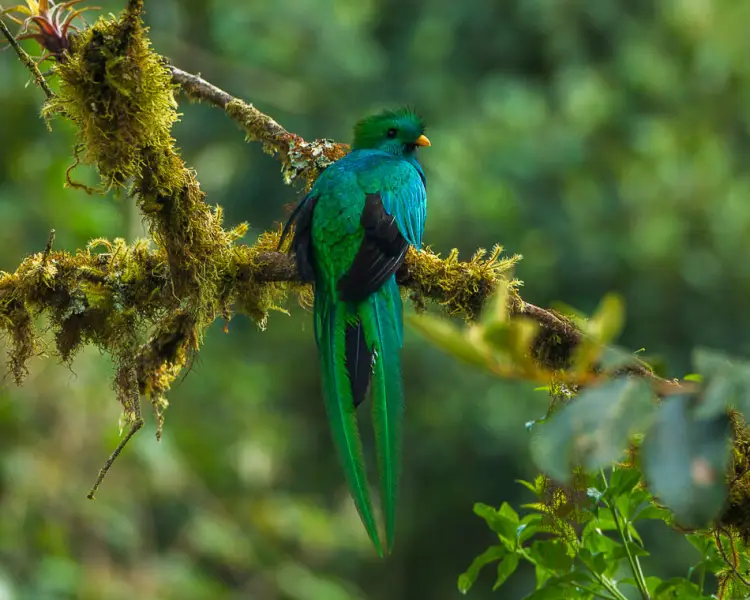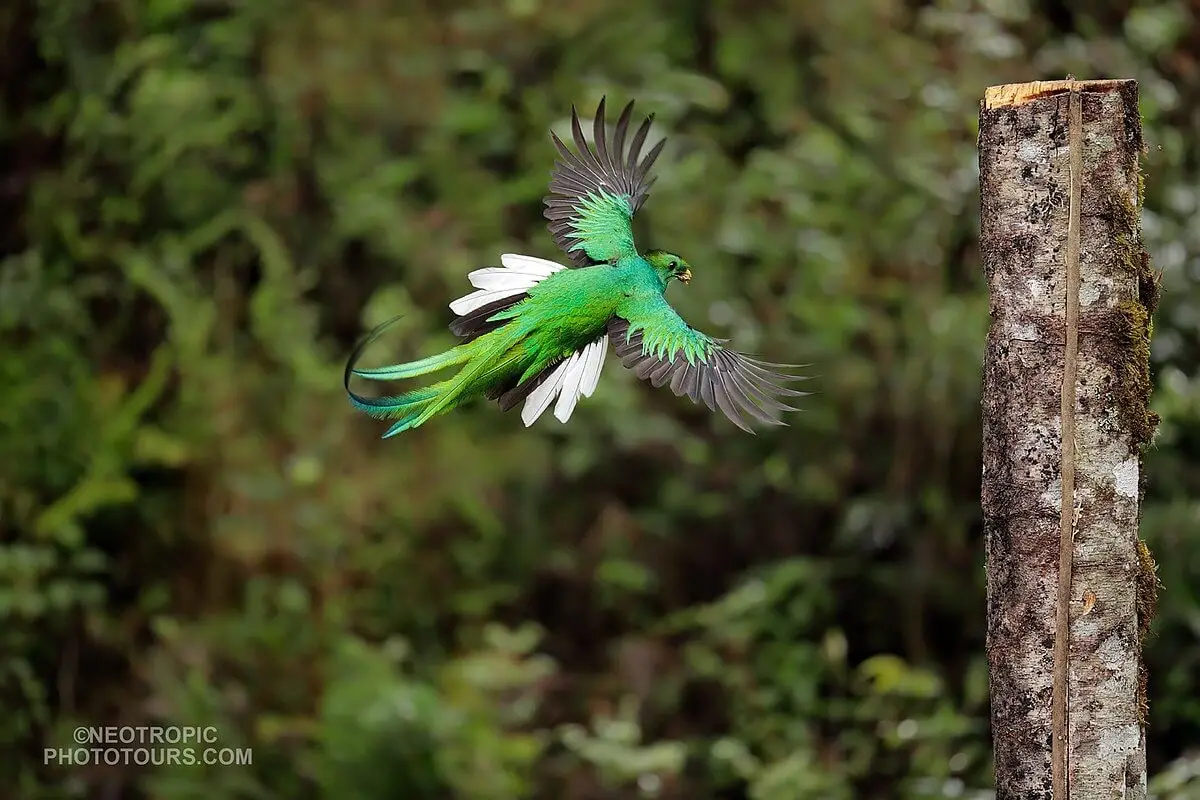
The magnificent quetzal (Pharomachrus mocinno) is a delightful avian species that inhabits southern Mexico and Central America. It belongs to the Trogonidae family and thrives in the tropical forest, particularly in montane cloud forests. This bird comes in two subspecies: P. m. mocinno and P. m. costaricensis. As an omnivore, the resplendent quetzal feeds mainly on fruits from the Lauraceae family, but also consumes insects, lizards, frogs, and snails.




This creature is famous for its stunning and intricate feather patterns, which are quite distinct between males and females. The males boast shiny green plumes, a red lower breast and belly, black inner wings, and a white undertail. In contrast, the females have shorter tails and less vibrant coloring. Their bills, heads, lower breasts, and bellies tend to be grey or bronze-green.
To build their nests, these birds either carve hollows in decaying trees or repurpose holes made by woodpeckers. Interestingly, they share the responsibilities of incubating their eggs, with males taking daytime shifts and females taking over at night. Typically, the female lays between one to three eggs, which hatch in about 17-19 days. During breeding season (which usually starts in March and ends in August depending on location), quetzals migrate from the slopes to the canopy of the forest.




